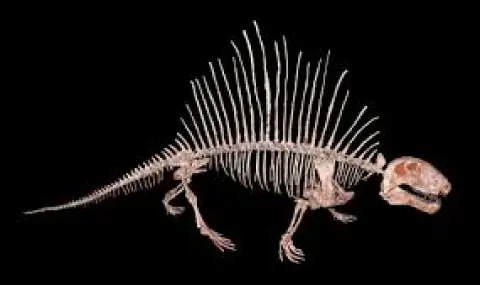Scientists discovered fossils of a sharp-toothed beast that resembled a large salamander that ruled the waters before the first dinosaurs appeared , reported the Associated Press, quoted by BTA.
The predator, which was larger than a human, probably used its broad, flat head and front teeth to suck and chop unsuspecting prey, researchers say. His skull was about 60 centimeters long.
"It acted like an aggressive stapler," says Michael Coates, a biologist at the University of Chicago who was not involved in the study.
Fossils from four creatures discovered about a decade ago were analysed, including parts of a skull and a spinal column.
The findings about the creature, called Gaiasia jennyae, were published Wednesday in the journal "Nature". It lived about 40 million years before the evolution of the dinosaurs.
Researchers have long studied such ancient predators to discover the origins of tetrapods: four-legged animals that climbed onto land with toes instead of fins and evolved into amphibians, birds and mammals, including humans, the Associated Press notes.
Most early tetrapod fossils are from hot prehistoric coal swamps along the equator, in present-day North America and Europe. But these new remains, dating from about 280 million years ago, were found in what is now Namibia, an area in Africa that was once covered by glaciers and ice.
This means that tetrapods may have also lived in colder climates earlier than scientists expected, raising more questions about how and when they appeared on Earth, notes the Associated Press.
"The early history of the first tetrapods is much more complex than we thought," says study co-author Claudia Marsicano of the University of Buenos Aires.
The creature's name comes from the Gai-As rock formation in Namibia, where the fossils were found, and from the late paleontologist Jennifer Clack, who studied how tetrapods evolved.
